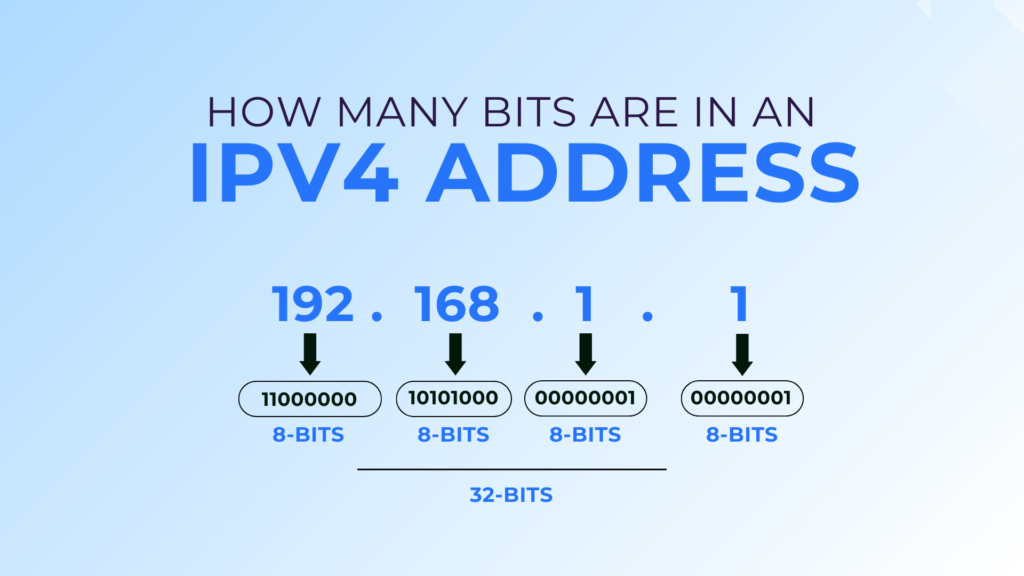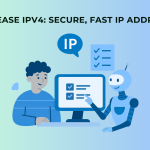What is an IPv4 Address?
An IPv4 address is a series of four eight-bit binary numbers separated by a decimal point. Although any numbering system can represent a unique 32-bit number, IP addresses are most commonly expressed in dot-decimal notation.
Parts of the IPv4 Address
IPv4 addresses consist of three parts:
- Network Part:
The network part indicates the distinctive identifier assigned to the network. This part also identifies the class of the network. - Host Part:
The host part uniquely identifies a device within the network. This portion of the IPv4 address is assigned to every host. For each host on the network, the network part remains the same, but the host part varies. - Subnet Number:
This optional part of an IPv4 address is used for dividing large networks into smaller subnets, and subnet numbers are assigned accordingly.
The 32-Bit Structure of an IPv4 Address
An IPv4 address consists of 32 bits, divided into four octets, each containing 8 bits. This 32-bit structure is both historical and technical in nature.
IPv4 addresses uniquely identify devices on a network. With 32 bits, IPv4 can provide approximately 4.3 billion unique addresses (2^32). However, due to the rapid growth of the internet and the increasing number of devices connected to it, the IPv4 address space has become insufficient to accommodate all devices.
Conclusion
Understanding the structure and components of an IPv4 address is crucial for network management and addressing. With 32 bits divided into network, host, and optional subnet parts, IPv4 addresses form the foundation of internet communication. However, the limitations of the 32-bit address space have led to the adoption of IPv6, offering a much larger pool of addresses to meet the growing demands of the digital world.
Frequently Asked Questions
An example of an IPv4 address is 192.168.1.1. This address is commonly used as the default IP address for many home broadband routers.
IPv4 provides approximately 4.3 billion unique addresses. This is calculated as 2^32, where IPv4 uses a 32-bit address space.
The five classes of IPv4 addresses are:
- Class A: Ranges from 1.0.0.0 to 126.0.0.0, designed for very large networks.
- Class B: Ranges from 128.0.0.0 to 191.255.0.0, intended for medium-sized networks.
- Class C: Ranges from 192.0.0.0 to 223.255.255.0, used for small networks.
- Class D: Ranges from 224.0.0.0 to 239.255.255.255, reserved for multicast groups.
Class E: Ranges from 240.0.0.0 to 255.255.255.255, reserved for experimental use.
The two types of IPv4 addresses are:
- Public IPv4 Addresses: These addresses are globally unique and can be accessed over the internet. They are assigned by the Internet Assigned Numbers Authority (IANA) and regional internet registries.
- Private IPv4 Addresses: These addresses are used within private networks and are not routable on the internet. They allow for address reuse within different private networks and typically fall within the following ranges:
- 10.0.0.0 to 10.255.255.255
- 172.16.0.0 to 172.31.255.255
- 192.168.0.0 to 192.168.255.255






